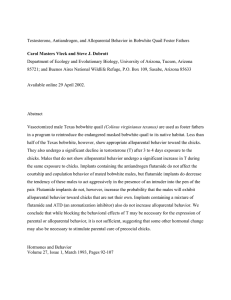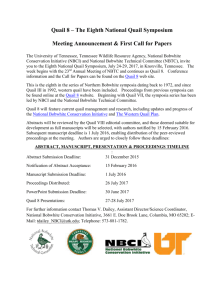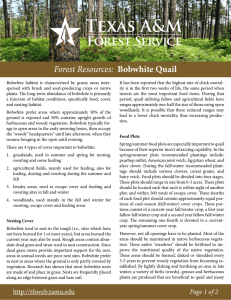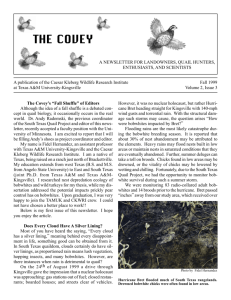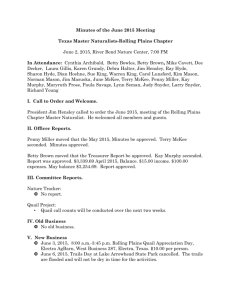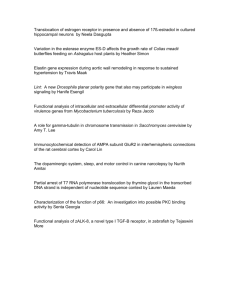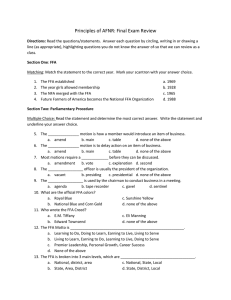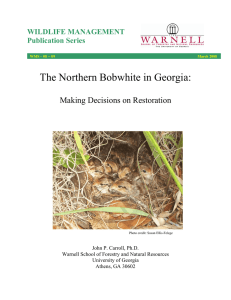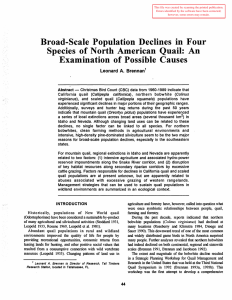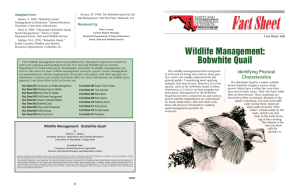Document 11285439
advertisement
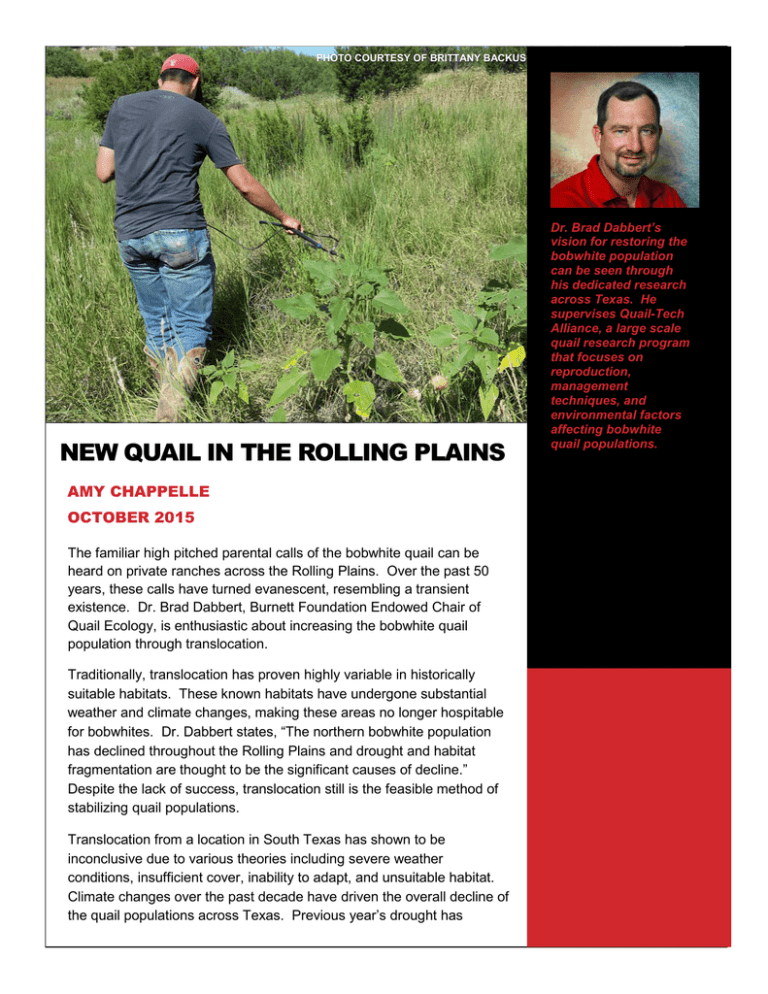
PHOTO COURTESY OF BRITTANY BACKUS NEW QUAIL IN THE ROLLING PLAINS AMY CHAPPELLE OCTOBER 2015 The familiar high pitched parental calls of the bobwhite quail can be heard on private ranches across the Rolling Plains. Over the past 50 years, these calls have turned evanescent, resembling a transient existence. Dr. Brad Dabbert, Burnett Foundation Endowed Chair of Quail Ecology, is enthusiastic about increasing the bobwhite quail population through translocation. Traditionally, translocation has proven highly variable in historically suitable habitats. These known habitats have undergone substantial weather and climate changes, making these areas no longer hospitable for bobwhites. Dr. Dabbert states, “The northern bobwhite population has declined throughout the Rolling Plains and drought and habitat fragmentation are thought to be the significant causes of decline.” Despite the lack of success, translocation still is the feasible method of stabilizing quail populations. Translocation from a location in South Texas has shown to be inconclusive due to various theories including severe weather conditions, insufficient cover, inability to adapt, and unsuitable habitat. Climate changes over the past decade have driven the overall decline of the quail populations across Texas. Previous year’s drought has Dr. Brad Dabbert’s vision for restoring the bobwhite population can be seen through his dedicated research across Texas. He supervises Quail-Tech Alliance, a large scale quail research program that focuses on reproduction, management techniques, and environmental factors affecting bobwhite quail populations. caused a lack of proper covering for nests and protection from predators. On the other hand, the recent torrential rainfall on the Rolling Plains flooded nests, forcing the hens from brooding and the chicks died from hypothermia. “Clearly, precipitation is a controlling factor for bobwhite populations, because of its powerful influence on reproduction output and secondarily adult survival,” stresses Dr. Dabbert. However, too much of a good thing can be detrimental to the overall success of the bobwhite population. In addition to the environmental changes, resident and translocated bobwhites are also contending with pen-raised and released bobwhites that are now utilizing more of the already dwindled natural resources. These commercially available birds are genetically different from resident and translocated birds, posing a major problem with reproduction and possibly overall survival success. Pen-raised and released birds are unable to adapt to the new environment, but do contribute to the depletion of available foods, cover, and suitable mates for resident bobwhites. There are many factors contributing to the overall decline of the bobwhite population, but there are some key management techniques that private landowners can implement to help this upland game bird survive. Broadcasting supplemental feed into vegetation during drought periods “speeds population recovery because of increased reproductive output,” confirms Dr. Dabbert. Another key strategy is for land owners to increase the necessary cover for nests by keeping cattle rates at the appropriate level so overgrazing does not become an issue. Conservation efforts should be continued even after population numbers reach safe and maintainable figures. Currently, Dr. Dabbert is gearing up for his annual trapping of bobwhite quail near Laredo, Texas. “Translocation of quail in Texas is currently unknown, and the success of translocation is mixed,” Dr. Dabbert explains. The Rolling Plains is a suitable habitat for translocation as the resident population of quail appears stable for the time being and the ecosystem remains balanced despite extreme conditions. Dr. Dabbert remains hopeful that translocation may be the key ingredient to restoring quail populations across Texas. Without the intervention of private land owners and concerned hunters, the bobwhite population may continue to decrease, pushing another once prevalent species into extinction.
